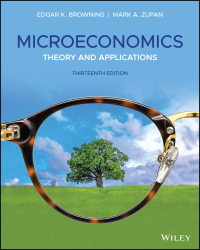Question
XYZ Company purchased its salable product in the current year as follows: Jan. 1 Beginning inventory 140 units @ RO 6.00 = RO 840 Mar.7
XYZ Company purchased its salable product in the current year as follows:
| Jan. 1 | Beginning inventory | 140 units @ RO 6.00 = RO 840 |
| Mar.7 | Purchase | 300 units @ RO 5.60 = 1,680 |
| July 28 | Purchase | 550 units @ RO 5.00 = 2,750 |
| Oct. 3 | Purchase | 350 units @ RO 4.60 = 1,610 |
| Dec.19 | Purchase | 50 units @ RO 4.10 = 205 |
|
| Total | 1,390 units |
XYZ Company resold its product at RO 15 per unit on the following dates:
| Jan. 10 | 100 units |
| Mar. 15 | 225 units |
| Oct. 5 | 700 units |
| Total | 1,025 units |
Answer the following MCQs using FIFO, Weighted average method and Specific Identification method ( Ending inventory consist of 365 units; 315 from the July 28 purchase and 50 units from the December 19 purchase in case of specific identification method)
Question 11
Not yet answered
Marked out of 1.00
Flag question
Question text
Under periodic system, the cost of ending inventory at the end of the accounting period using FIFO method is:
a.
RO 205
b.
None of the given options
c.
RO 1,654
d.
RO 1,449
Clear my choice
Question 12
Not yet answered
Marked out of 1.00
Flag question
Question text
Using FIFO method under perpetual system, the gross profit at the end of the accounting period is:
a.
RO 10,070
b.
None of the given options
c.
RO 10,155
d.
RO 9,944
Clear my choice
Question 13
Not yet answered
Marked out of 1.00
Flag question
Question text
The specific identification method of inventory valuation is based on the
a.
Actual cost of each item of merchandise
b.
Average cost of each item of merchandise.
c.
Latest cost of each item of merchandise
d.
Earliest cost of each item of merchandise
Clear my choice
Question 14
Not yet answered
Marked out of 1.00
Flag question
Question text
The gross profit method of determining ending inventory cost
a.
Can be used without taking a physical count of merchandise
b.
Provides accurate information about the number of units in inventory.
c.
Requires that a firm keep inventory and purchases data at retail value as well as at cost.
d.
Requires that the inventory be classified into groups of items of about the same rate of mark on.
Clear my choice
Question 15
Not yet answered
Marked out of 1.00
Flag question
Question text
The total sales revenue during the accounting period:
a.
None of the given options.
b.
RO 15,375
c.
RO 10,555
d.
RO 15,220
Step by Step Solution
There are 3 Steps involved in it
Step: 1

Get Instant Access to Expert-Tailored Solutions
See step-by-step solutions with expert insights and AI powered tools for academic success
Step: 2

Step: 3

Ace Your Homework with AI
Get the answers you need in no time with our AI-driven, step-by-step assistance
Get Started


